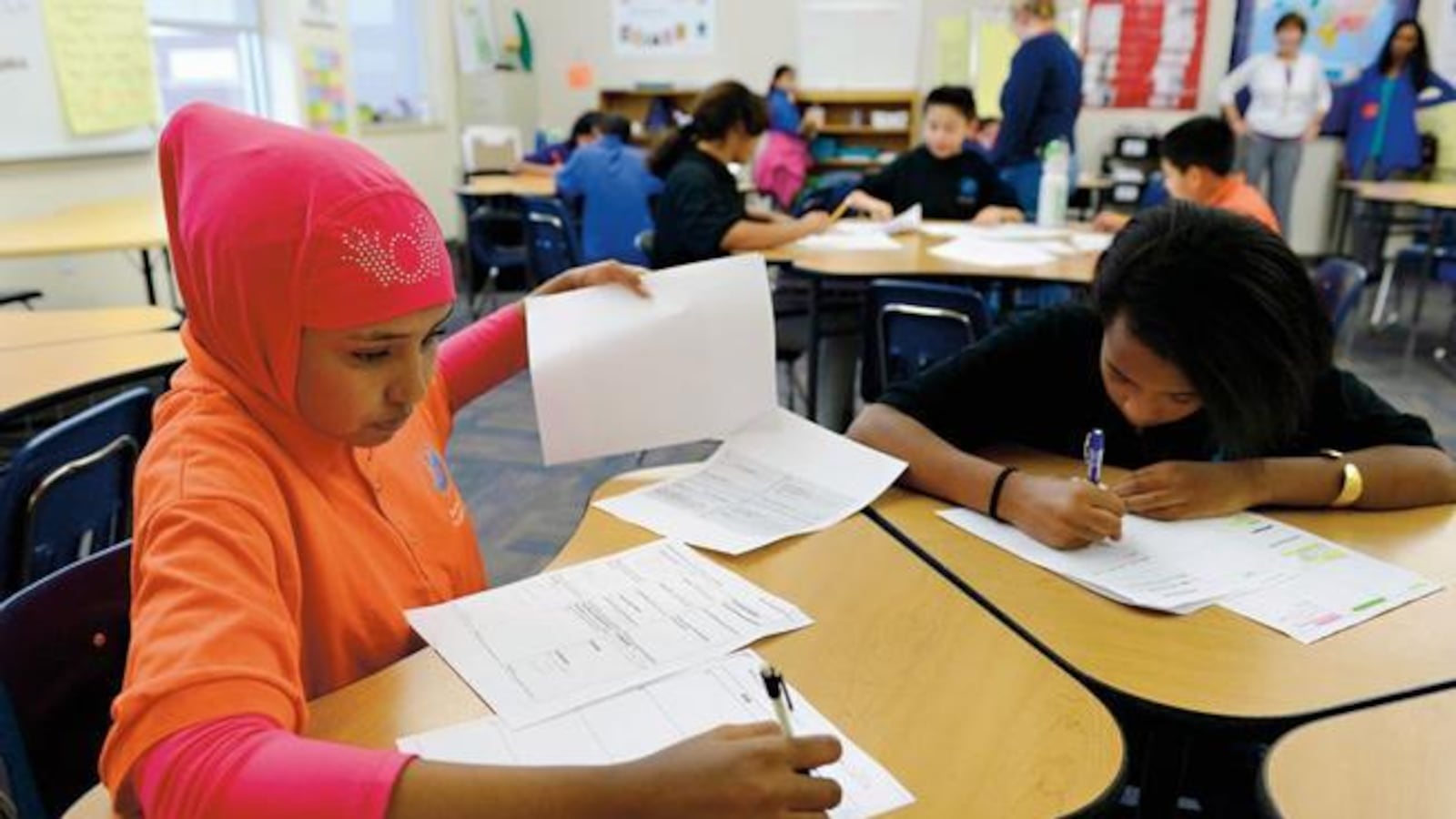The Aurora school district, facing declining enrollment and shifting demographics, has identified 14 schools that could be “repurposed,” in the words of superintendent Rico Munn.
The list is part of a draft for a long-term facilities and education plan to guide the district as development creates a need for new schools in the east, and dropping enrollment has left half-empty buildings in the west. The district has been working on the plan, which officials call Blueprint APS, for more than a year.
The implementation framework, which will be presented to the school board Tuesday, provides the most detail yet about how the plan might play out — with a mix of regional magnet schools, perhaps community centers and fewer campuses.
“The reality is that the status quo cannot continue to serve this community,” Munn said.
The plan is rooted in feedback from the community over the last year about what its schools should look like. The board hesitated when first presented with multiple scenarios and instead asked the district to combine several priorities into one plan. Now Munn is presenting details about enacting that merged plan.
The school board won’t vote on the plan for now, but district officials said they hope by providing these details now, they might engage more community members in the work.
“If you are a parent or a staff member in a low-enrollment school, you know it’s coming,” Munn said. “For some people in buildings that didn’t see low enrollment, they might think this didn’t involve them.”
But, he said, “we wouldn’t have to do this work if it was about one or two buildings.”
As it stands, the plan will try to guide decisions on closing, merging or repurposing schools, by focusing on the idea that the Aurora district values choice, but not necessarily from charter schools. That means the district is considering creating regional magnet schools that specialize in certain programs.
The idea is that magnet schools could attract students from across the district, filling schools in neighborhoods that are seeing a drop in students. And the options could be attractive to students who may be going to school outside the district.
The school board responded favorably to the framework last month and gave Munn the green light to continue planning more details.
Based on the new detail, the district will first have to draw a map that breaks up the district into regions. Currently, Munn said the district is considering anywhere from four to eight regions.
Then, the district would talk to communities about what their region’s specialization could be. Officials say it makes sense to consider industry established in the area, such as Buckley’s Air Force Base, or Anschutz Medical Campus, because they can be a resource for the schools.
Then following more discussions, the district will decide which school would become the region’s “boundary” school, the new district term for an assigned neighborhood school. Boundaries will expand to take in more students, and other campuses will be considered for other uses, such as creating magnet programs or hosting community services or organizations. The schools could also close.
Out of 40 elementary and middle schools, Aurora has created a list of 22 schools that it would consider as possible boundary schools, and a list of 14 schools it would likely consider for other uses. A handful of schools appear on both lists, and some others were excluded from both lists.
High schools aren’t part of either list, in part because they aren’t as underutilized as elementary and middle schools, and in part because high schools will be reviewed based on different factors, officials said.
For now, Munn said that in drawing up its lists, the district considered the condition of buildings, the shift in population, and characteristics of a neighborhood, such as whether students would have to cross a highway to get to a boundary school.
Performance was not a factor in deciding whether a school should be considered for repurposing, Munn said. North Middle School, one of the district’s lowest-performing schools, is on both lists, as a possible new boundary school or as a possible school to repurpose. Virginia Court Elementary, the only other lowest-performing school in the district based on state ratings (excluding high schools), is also on the list of possible boundary schools.
Munn said the plan did consider performance in prioritizing more K-8 schools. District officials have said they have found students in the combined schools perform better, so staff will look for possibilities for combining elementary and middle schools. Research has suggested benefits to the model, but a more recent study has cautioned that some of those benefits may be overstated.
Still, the district’s plan is also meant to engage students and create better programs in each region.
“We think we can have higher quality, focusing on the quality of program delivery,” Munn said.
If the plan continues to move forward, district staff will create a timeline for making changes by prioritizing certain regions. Other regions may not see building changes for several years.
The plan will also require district officials to consider changing funding, transportation models to ensure students can access their options, enrollment policies, and strategies for how teachers and staff will be impacted when schools close or merge.
To help lead the work, the district is hiring Dave Schoenhals, a former Aurora principal who will return after some time working in Jeffco.

